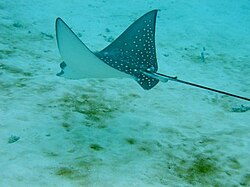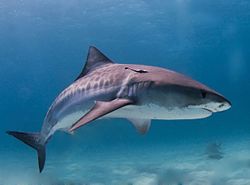| Genus | Species | Member | Locality | Material | Notes | Images |
|---|
| Amphisbaenia [15] | indeterminate | Umm Rigl Member | Birket Qarun | MUVP 453, an isolated presacral vertebra | Indeterminate legless squamate | |
| Booid [16] | "taxon A", "taxon B" | Umm Rigl Member | Birket Qarun | 1 left maxilla (DPC 21241), 3 anterior trunk vertebrae (DPC 25605, 25643, and 25655), 17 mid-trunk vertebrae (DPC 25603, 25606, 25613, 25618, 25619, 25628, 25635, 25642, 25644 to 25646, 25649, 25660, 25670, 25671, 25684, and 25690), 4 posterior trunk vertebrae (DPC 25623, 25673, 25685, and 25686); 7 mid-trunk vertebrae (DPC 25610, 25614, 25615, 25629, 25639, 25651, and 25652), 5 posterior trunk vertebrae (DPC 25621, 25622, 25638, 25662, and 25672) | Indeterminate boa material | |
| Caenophidia [16] | indeterminate | Umm Rigl Member | Birket Qarun | 1 "badly eroded partial vertebra" (DPC 25679) | Indeterminate snake material | |
| Gigantophis [17] | garstini | Umm Rigl Member | Birket Qarun | 1 "giant" mid-trunk vertebra (DPC 25616), 1 "large" juvenile mid-trunk vertebra (DPC 25641) | A giant madtsoiid snake |  |
| Procerophis [15] | sp. | Umm Rigl Member | Birket Qarun | MUVP 454, an isolated mid- trunk vertebra | Indeterminate legless squamate | |
| Pterosphenus [17] | schweinfurthi | Umm Rigl Member | Birket Qarun | 5 anterior trunk vertebrae (DPC 21270, 21287, 24291, 25666, and 25667), 4 mid-trunk vertebrae (DPC 25607, 25630, 25668, and 25680) | A Palaeophiidae sea snake |  |
| Renenutet [16] | enmerwer, sp. | Umm Rigl Member | Birket Qarun | holotype: GCM 83731, a mid-trunk vertebra; paratypes: DPC 25657, a mid-trunk vertebra, and DPC 25627, a posterior trunk vertebra; referred specimens: 7 mid-trunk vertebrae (DPC 25609, 25611, 25633, 25640, 25656, 25657, and 25687), 2 posterior trunk vertebrae (DPC 25602 and 25608); MUVP 455, mid-trunk vertebra (4.1 mm centrum length); MUVP 457, MUVP 458, MUVP 459, anterior caudal vertebrae (5.1 mm centrum length and 4.9 mm height of the neural arch and spine); MUVP 460, posterior caudal vertebra (2 mm centrum length). | A Colubroidea snake | |
| Russellophiid [16] | indeterminate | Umm Rigl Member | Birket Qarun | 1 single mid-trunk vertebra (DPC 25663) | Indeterminate snake material | |
| Tropidophiid [16] | indeterminate | Umm Rigl Member | Birket Qarun | 1 anterior trunk vertebra (DPC 25650), 3 mid-trunk vertebrae (DPC 25634, 25654, and 25664), 2 caudal vertebrae (DPC 25674 and 25692) | Indeterminate dwarf boa material | |
| Serpentes [16] | indeterminate | Umm Rigl Member | Birket Qarun | DPC 25620, 25661, 25665 (Pterosphenus or Gigantophis?), 25677, 25678, 25689, 25691, 25693, and 2694, incomplete and/or strongly eroded vertebrae | Indeterminate snake material | |
| Varanus [18] | sp. | Umm Rigl Member | Birket Qarun | Vertebrae: DPC 21355, one cervical, two trunk and two caudal; 21442, one caudal; 23257, two trunk and two caudal; 23258, four caudals; 23778, caudal | A Monitor lizard | |























































